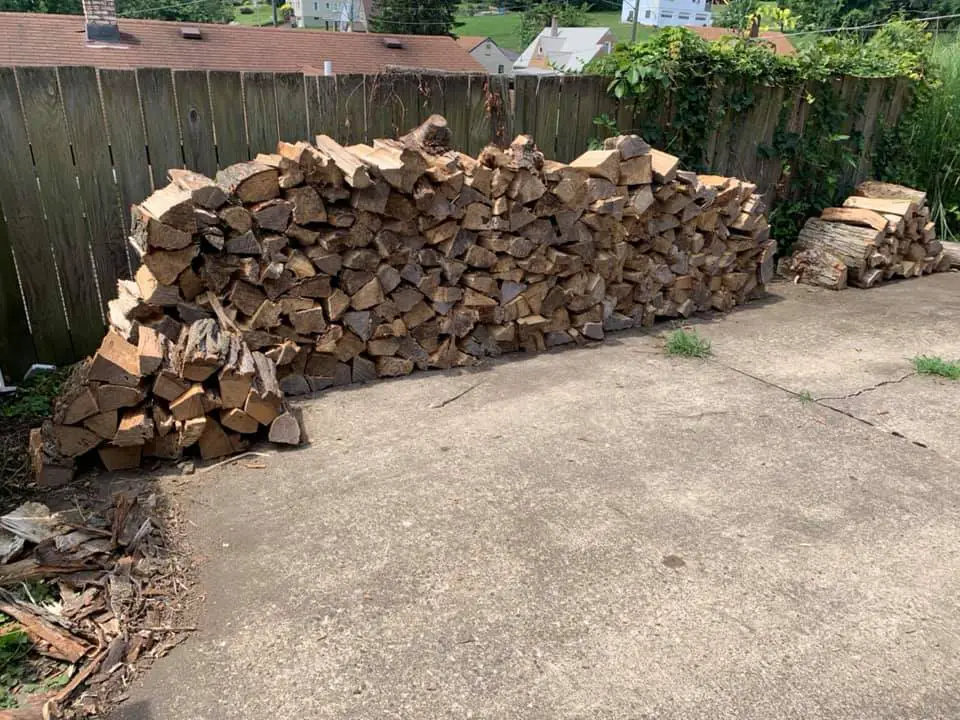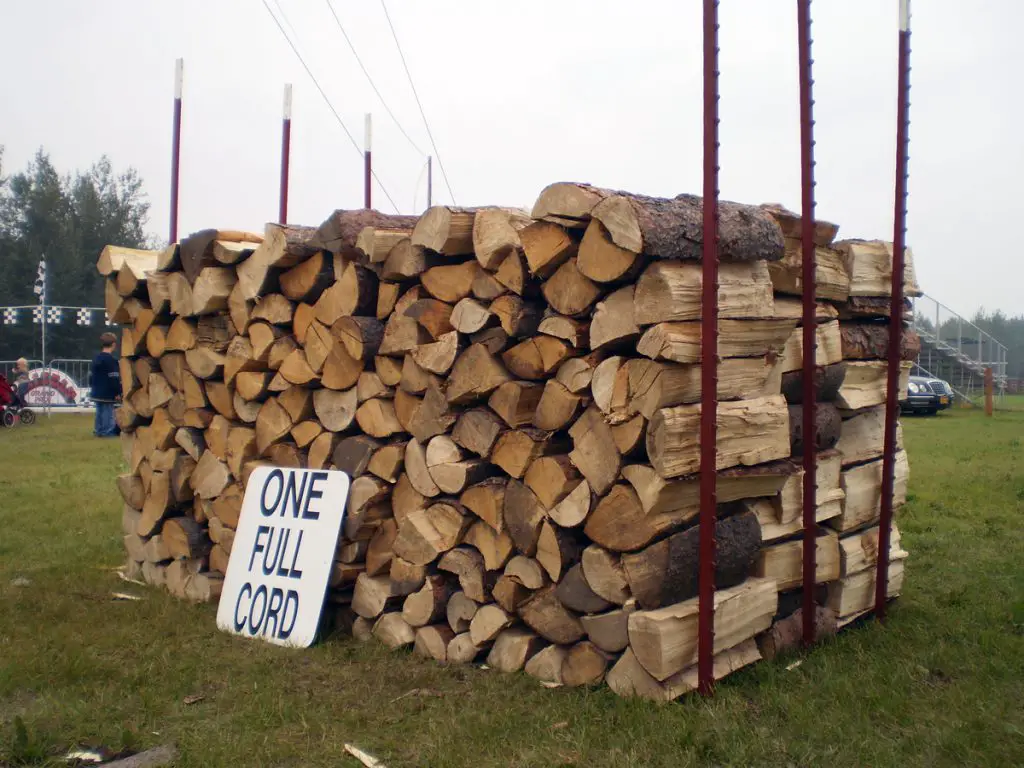A standard full cord of firewood is 128 cubic feet, typically arranged in a stack 4 feet high, 8 feet long, and 4 feet deep. The smaller face cord measures 4 feet high, 8 feet long, and the depth is the length of the logs, usually 16 inches.
You’ll need a firewood size chart when trying to figure out the right amount of firewood to buy or cut. This guide outlines common firewood stack sizes, measurements, and volume, helping you make the right choice for your needs.
Table of Contents
Common Firewood Stack Sizes
| Firewood Stack | Dimensions (Feet) | Average Weight (Lbs) | Volume (Cubic Feet) |
|---|---|---|---|
| Full Cord | 4x4x8 | 2,500-3,500 | 128 |
| Face Cord | 4x8x16 | 1,200-2,000 | 32 |
| Rick Cord | 4x8x12 | 800-1,200 | 24 |
Firewood Stack Size Calculator
The easiest way to determine the volume of a woodpile is to use a firewood cord calculator. All you need is your stack’s height, width, and depth, and it’ll give you the volume in cubic feet. Remember, a standard full cord is 128 cubic feet, so you can compare accordingly.

Full Cord
A full cord, often referred to as a “cord firewood,” is the standard firewood measurement in many regions. Imagine a neatly stacked pile of logs with dimensions of 4 feet high, 4 feet wide, and 8 feet long – that’s your full cord. It’s equivalent to 128 cubic feet.
However, it’s worth noting that this calculation accounts for the actual wood, the bark, and the air space nestled between the logs. In other words, the cord measurement reflects the total volume the stack of wood occupies, not the amount of solid wood itself.
A full cord is a pretty substantial amount of firewood. Depending on your local climate, a full cord can usually generate enough heat to keep your house warm throughout the winter if you’re using a wood stove for heating.
I understand that calculating the amount of firewood you need can be tricky, especially if you’re new to this. So, I’ve developed a firewood cord calculator that can help you determine how much firewood you need for the winter based on the size of your house and its location. It can be a game-changer in your firewood planning.
I have created a calculator to help you judge how much firewood you need to survive winter depending on your house size and location.

Face Cord
Often, you’ll hear a face cord referred to as a ‘cord face cord.’ This stack size typically makes up one-third of a full cord by volume. However, unlike the full cord, a face cord’s dimensions aren’t fixed. The depth of a face cord corresponds to the length of the firewood pieces, which can vary but typically range from 16 to 18 inches.
In my years of dealing with firewood, I’ve seen quite a few people mistakenly equating a face cord with a full cord. This common misunderstanding can lead to unexpected firewood shortages in the cold months, which you do not want to find yourself in.
Therefore, it’s crucial to understand the difference between these terms to avoid any miscommunications or disappointments. Remember, in the world of firewood, clear communication on sizes is key to getting what you need.
Rick Cord
Moving on to the Rick cord, its dimensions can be confusing since they can vary considerably. Generally speaking, a Rick cord is smaller than a face cord, with firewood pieces measuring between 12 to 16 inches.
From my experience, I cannot stress enough the importance of clarifying a Rick cord’s exact dimensions and volume before making a purchase. It may seem like a minor detail, but ensuring you’re on the same page with the seller can save you a lot of potential headaches down the line.
Seasoned vs Unseasoned Firewood
Having spent significant time working with firewood, I’ve understood the critical difference between seasoned and unseasoned firewood. Simply put, seasoned wood has been dried out and is ready to burn, whereas unseasoned, or “green,” wood still retains a high moisture content.
Seasoned firewood has several advantages over its unseasoned counterpart. It typically burns hotter, produces less smoke, and leaves less creosote residue in your chimney, making it a cleaner and more efficient choice for heating.
Firewood Measurements
It’s essential to remember that firewood measurements don’t follow the same rules as standard lumber measurements. When dealing with lumber, you’ll hear terms like ‘nominal’ size and ‘actual’ size. The nominal size refers to the dimensions of the wood before it’s dried and planed, while the actual size refers to the final, smaller size of the finished piece of lumber.
However, in the context of firewood, we’re concerned with volume, not the board feet, to account for the irregular shapes of the logs and the spaces between them when stacked. This measurement ensures you get a fair deal, regardless of the size or shape of the logs in the stack.
Conclusion
Whether you’re trying to calculate how much firewood you’ll need for the winter or preparing for a weekend camping trip, a solid understanding of firewood measurements is essential. A full cord, face cord, or rick cord – each serves its purpose and suits different needs. And remember, always check whether your firewood is seasoned or unseasoned, as it can dramatically affect your fire’s heat and longevity.
With this handy guide and firewood size chart, you can make the best choices for your firewood needs.
